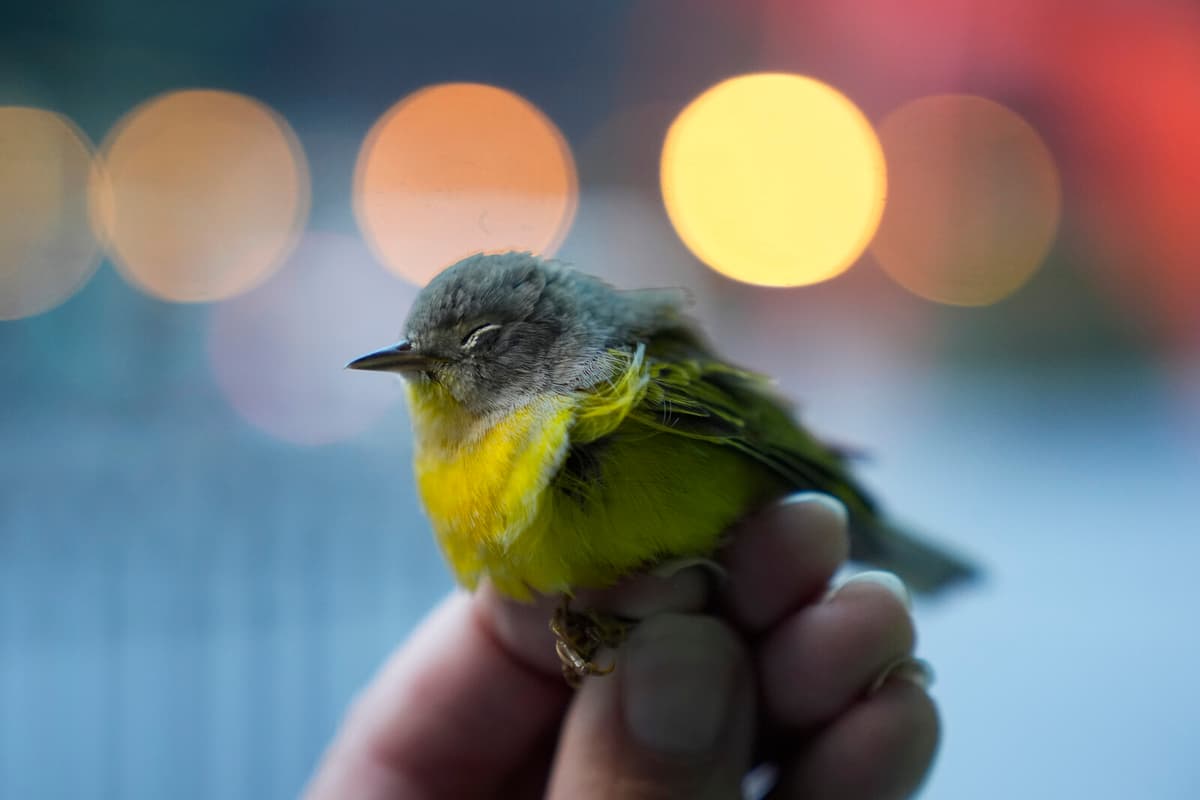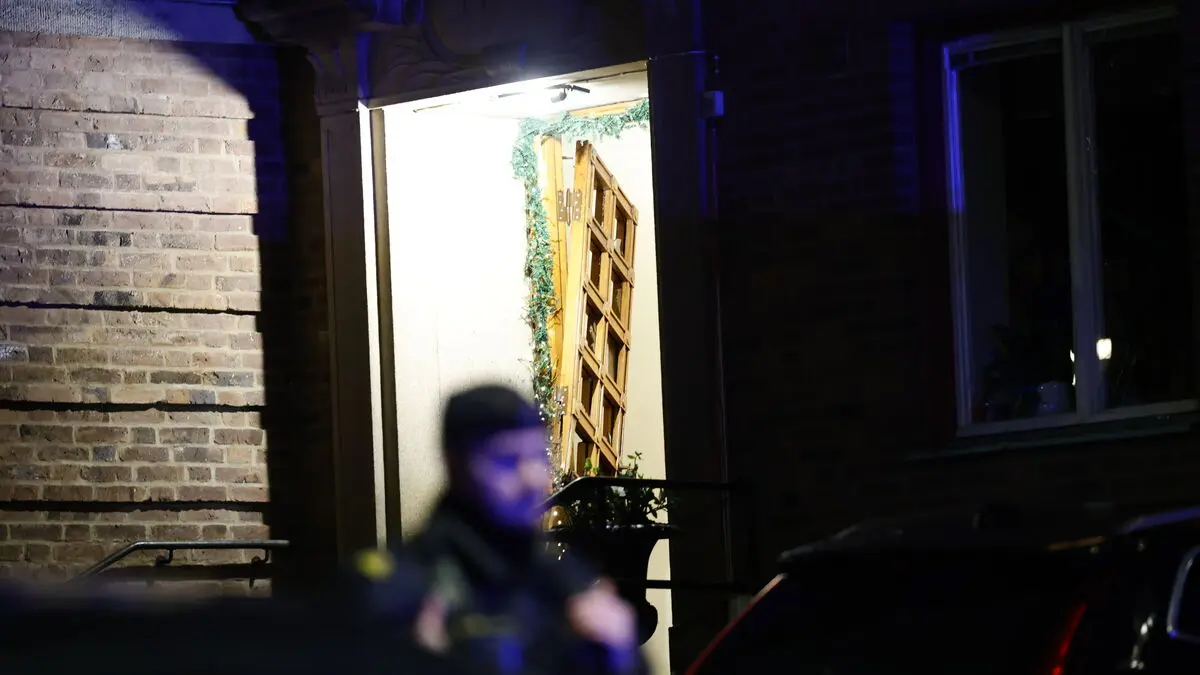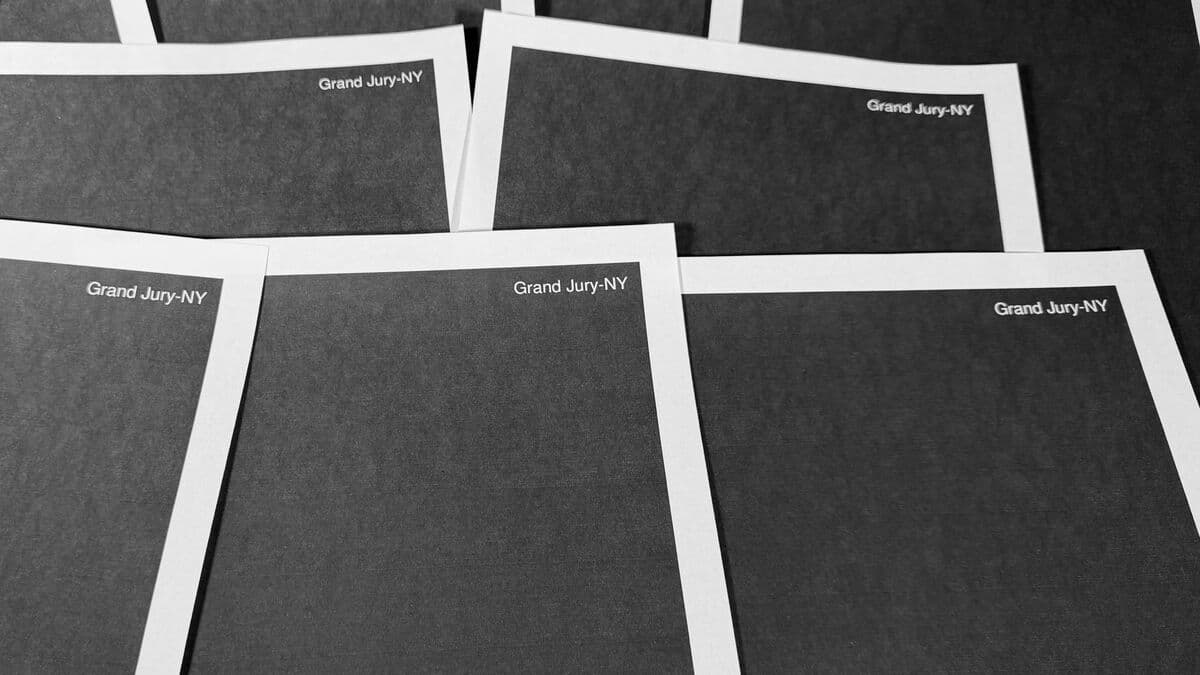Professor Daniel Klem was seasoned when he visited the McCormick building in Chicago in the USA. He has devoted his research career to studying bird collisions and has been teaching on the subject since the 1970s at Muhlenberg College in Pennsylvania.
Despite this, he was amazed at the number of American tree creepers and marsh sparrows that lay dead below the glass facade.
McCormick was a terrible bird killer, he says.
At times of the year when migratory birds were passing through, it was not unusual for up to 200 birds per day to crash into the facade. An extremely bloody Wednesday in October 2023 saw 964 bird bodies around the building.
The reason birds collide with windows is simple – they do not see them.
It's not about suicide, but that they are deceived. They are either trying to reach a habitat on the other side, or they encounter the illusion of a reflection of the habitat. Either way, they cannot see the difference and both options are equally deadly, says Klem.
No visible signs
A field study from last year showed that windows can be worse than previously thought. Of 1,356 bird collisions, half left no visible signs. The birds manage to leave the scene, but some are so dazed that they easily fall prey to predators, or later die from their injuries.
Klem points out that domestic cats are often described as a major threat to birds.
But cats, like all predators, take the weak, he says and continues:
They know that birds are near windows, they go there and take the dead or injured. So even though it's actually a matter of death due to windows, they are counted as killed by cats.
His calculations suggest that over a billion birds die from window collisions every year – just in the USA, which would suggest that it could be a matter of billions on a global scale.
When it comes to other threats to birds – such as predators or starvation – they mainly affect the weakest individuals. In this way, the strongest survive, who hopefully will reproduce.
But in the case of windows, it is an indiscriminate killer. It takes the strongest individuals, as well as the weakest, he says.
The non-profit organization Stockholms Vildfågel Rehab receives daily alarm calls about birds that have collided with windows. It is one of the most common cases that people contact the association about.
It's a huge problem, because windows are everywhere, says volunteer Andréas Forsman.
The recommendation is in most cases to let the bird be in a safe place where it can rest. A simple solution is to place a cardboard box upside down over it with a hole so that the bird can eventually get out.
Our experience is that birds that collide with windows do not need to be taken care of at all, it only worsens their prognosis. If the bird has a concussion, it is extra sensitive to stress, so the less you do, the better, he says.
Size irrelevant
The size of the birds also seems to have no significance. Forsman mentions several examples of dove hawks that crashed into windows with such force that the window shattered, but the birds survived.
Another example, which a video clip on the internet testifies to, occurred in 2013 when Oral Roberts University inaugurated the autumn term in the auditorium by letting an eagle fly around over the audience, to then safely land on the handler's arm. But the eagle got a taste of freedom, and at the same time as the audience chanted "USA, USA", it flew straight into the auditorium's window and glided down to the ground to the audience's horror. In that case, the eagle survived – something that is far from certain in other cases.
Predatory birds seem to be extra vulnerable to windows because they often hunt prey and focus on it, and then both the prey and the predator are killed.
But there are things that can be done. McCormick in Chicago is a clear example of this. From 1982 to 2024, 41,700 birds that died after crashing into the building have been documented. Last summer, a pattern of white dots was applied to the facade.
With a distance of ten centimeters in height and five centimeters in width, it is sufficient for the birds to see the building.
The effect is dramatic. The number of deaths has decreased by 95 percent. 18 birds died against the building in the fall, compared to 1,280 the previous fall.
It's very encouraging, uplifting, and very hopeful, says Klem.
According to him, it works just as well to use lines, squares, or anything else. In many places, predator silhouettes can be seen on windows. They also work, but not because they look like a falcon or a hawk.
It's a myth. The decal protects the specific spot, but if it's too far between the silhouettes, the birds risk flying into the window and dying, he says.
The McCormick example has gained widespread attention, and the company that manufactures the plastic film used testifies to a great interest from others. Some cities in the USA have also introduced local rules to protect the birds.
Simple tips
For those who have hazardous windows at home, there are simple ways to deal with the problems. It can help to draw curtains or blinds, but not if the surface is reflective. Then you can paint with watercolor or soap, or put up special films with patterns. You can also hang ropes, nets, or threads in front of the windows. UV pens to draw on windows with have also begun to emerge, which do not leave visible marks for humans but which birds can see.
For those who feed birds and do not want to create a death trap, Daniel Klem has a simple tip, which also makes it easier to enjoy the guests:
If you place your bird feeder one meter or less from the window, you protect the birds, because they do not get enough speed to hurt themselves.
Gustav Sjöholm/TT
Fact: How buildings can be made safe for birds
TT
The main way to protect birds from the invisible danger is to simply make windows visible to them.
• Put out dots, lines, squares, or creative patterns with a distance of at least ten centimeters in height and five centimeters in width.
• Hang strings, cords, or ropes in front of windows, with about ten centimeters between them.
• Mosquito nets or other fine-meshed nets can be hung in front of windows.
• Bird-safe glass. During major renovations or new construction, it is possible to choose glass with built-in patterns.
• UV pens. Birds can see UV light, unlike humans. There are pens for sale that you can draw patterns with to make them visible to birds.
• If the glass is transparent, you can avoid having flowers and other things that attract birds on the inside. It can also work to draw curtains and blinds (which does not work if the pane reflects the outside).
• Hang the bird feeder near the window, then the bird won't have enough speed to hurt itself if it collides.
• Reduce lighting. Several cities in the USA have begun to turn off buildings in the evening and at night to avoid attracting birds. You should also avoid directing lamps towards the sky.





